As the resident Cosmic Horror junkie here at MGRM, I can say without a doubt that nobody gets the shaft harder in the horror department than Lovecraft fans. Consequently, no one knows how to derive value from entertainment regardless of obligatory “Is It Good?” ratings better than Lovecraft fans.
On one end, it’s a legitimate joy whenever this underrepresented branch of horror peeks its antediluvian head from the abyss, gracing us with the occasional gift before returning to slumber in the shadowy depths. On the other end, it’s common knowledge by now that Lovecraft’s work is notoriously difficult to emulate outside the realm of literature, to the point that the most media bearing the elder sign of ol’ H.P. poetically fails to grasp the genre’s intrigue past some base aesthetic choices. Suffice to say, getting a good cosmic horror fix is a rarity if an abundance of tentacles ain’t your end-all-be-all. Yet on rare occasions, like what happened as I waded through THE SINKING CITY, you find a game that just does it for you, capturing the essence of what makes Lovecraft enjoyable… even if the package it comes in is objectively a hot mess.
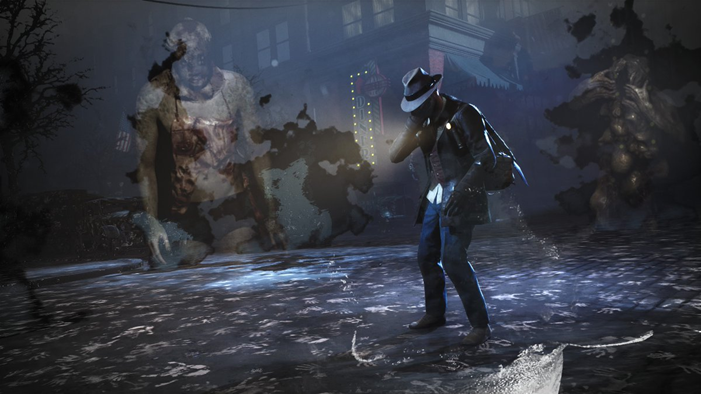
Pictured: Exactly what it looks like, I guess
THE SINKING CITY seized my attention early on with nothing more than proof of concept. An open-world detective game revolving around the Cthulhu mythos and developed by a team that already cut their teeth with a decent Sherlock Holmes/Lovecraft crossover seemed preordained to be … interesting, if nothing else. Yet as I had been reminded last year with the exceptional mediocrity I found in CALL OF CTHULHU, high expectation often leads to heightened disappointment. So, I actively avoided pre-release material and builds, abstaining in order to quell my bias and give this game its fair shake when release day inevitably drew near. And once I finally sat down to see exactly what developer Frogwares had to offer… I was underwhelmed.
The game’s premise is a familiar one to those acquainted with this flavor of horror: neurotic private eye Charles Reed is compelled to investigate a string of disappearances occurring within the mysteriously flooded city of Oakmont, with the added motive of uncovering why said city seems to frequent his nightmares. Pretty standard for a Lovecraftian affair, but it does a good job of setting up both a narrative and tonal intrigue, which is paramount to the identity of the genre. And to its credit, your opening interactions with the burg’s best and brightest while trudging through the city’s storm-weathered slums accentuates that focus on the thematic. However, it didn’t take more than 30 minutes of playtime, after coming across my first enemy and immediately seeing it get stuck clipping violently inside a doorway, for my initial feelings of cautious optimism to dissipate and dread to (unintentionally) set in.

Why’s this octopus standing upright? Why’s that corpse lit with no light source? Nobody knows!
Like the materials the game is inspired by, passing the introductory threshold yielded a series of odd occurrences, each working to expose more of a demented anomaly hiding underneath. It was small things, at first: random texture bugs, oddities like a breakneck day/night cycle, and the occasional inconsistent voicework became slowly apparent throughout my time exploring the labyrinthine layout of the Oakmont’s seven districts. But those small hiccups made way for noticing more substantial technical grievances down the line: repetitious interior cells, missing animations, lifeless third-person gunplay, and the monotony inherent in a broad-yet-shallow open world all started to push the limits of my sanity more than any eldritch entity ever could.
To say THE SINKING CITY is severely lacking in polish would be a gross understatement, even by modern game standards (am I being facetious? You decide!). In many respects, the game almost feels antiquated, as if someone decided to reach through time and space to bring one of the developer’s decade-old Sherlock Holmes games here and peddle it as a modern production. Why anyone would do this is anyone’s guess, but you get my point. Yet even as I sit here rattling off the game’s obvious failings, and in most cases would write this game off as something to skip, I can’t help but feel a soft spot for it. And honestly, the reason for this seemingly misplaced affection mostly boils down to something I think any Cthulhu-flavored follower can relate to: an authentic, almost excessive degree of passion for repping the source material.
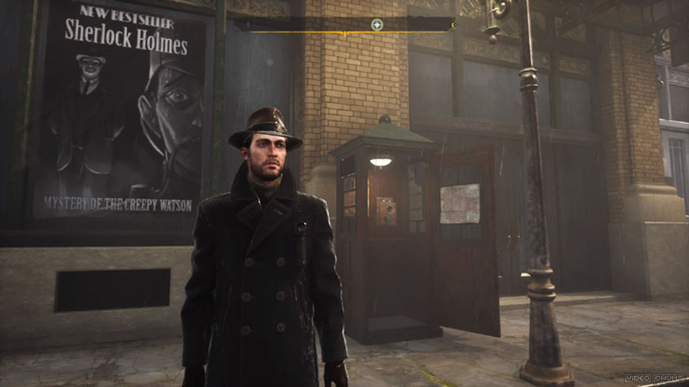
Plus, I can’t hate this level of self-deprecating in-joke
When not espousing the insignificance of humanity or the machinations of beings far beyond our understanding, the base of any cosmic horror story is uncovering some esoteric mystery. And while definitely not innovative in its approach to the system (quite the opposite actually), THE SINKING CITY’s means of doling out detective work acts more as an immersive tool than anything else. Rather than using automatic waypoints or highlighted objectives like most modern “detective” games, THE SINKING CITY understands that the more game-y half of the Lovecraft formula should leave most of the sleuthing to the player. Your cryptic cases exist as a test of your own ability and patience, cycling through obscure leads like “last seen north of Ward St. and Herbert West Ave.,” or by coaxing out a visit to places like the local police station to research patterns in strange occurrences when the trail inevitably runs cold.
What’s most important is that nothing ever falls into your lap. There are plenty of games that sideline the mystery aspect of the Cthulhu mythos completely and hyperfocus on the spectacle, which kind of defeats the purpose of Lovecraft’s slow-burn, cerebral approach to scares. Yet SINKING CITY embraces it: it’s all on you to actively cross-reference evidence, pinpoint locations on where to go or avoid on the in-game map, or come to a Holmesian realization by piecing together evidence in an on-the-nose “Mind Palace.” It’s far from streamlined, but the effort in pushing the detective role onto the player, and not just the avatar, highlights the value immersibility in the mystery brings to the genre, in addition to making the monotony of the actual “game” parts tolerable.
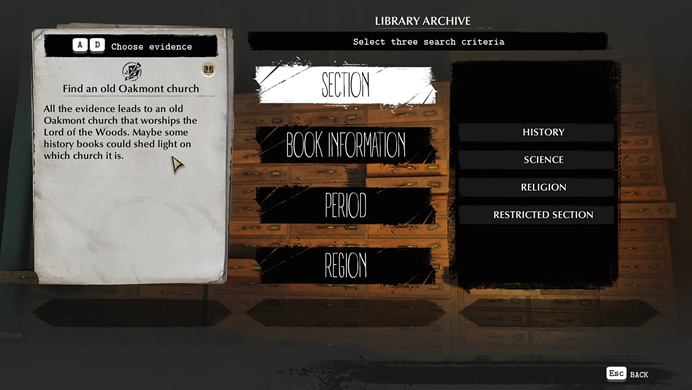
Days later, Reed would discover that the building he wanted was literally next door
Yet this DIY mentality is not what ultimately held my attention through 20-odd hours of treading water. No, the true saving grace of SINKING CITY is something only a handful of people will appreciate: the absurd amount of effort Frogwares put into showing off everything the mythos has to offer. Where typical games of this style loosely interpret or extrapolate on a single work of the mythos’ vast bibliography, THE SINKING CITY uses the whole beast; every chapter, case, corner, and crevice of the game exudes eldritch lore both classic and obscure, representing the entirety of Lovecraft’s identity, and flaunting it with pure enthusiasm and bombast.
Realistically, I know the majority of people aren’t going to care too much about the sheer volume of homage present throughout the visual design or narrative, because they wouldn’t be familiar with it. I mean, most people barely know about Cthulhu outside of name recognition, let alone characters like Hastur, or something completely out of left-field like vampiric Aztec priestesses. Yet there’s more to it than just flavor text and set dressing; there’s a palpable attention to the atmosphere that looms over every story beat, barnacled street corner, and trip beneath the waves. It’s a consistent, nihilistic sense of dread and fear of the unknown mixed with pulpy, 1930s sci-fi and noir that lingered over the whole experience, and it’s genuinely the most invested and entertained I’ve been with a Lovecraft-themed game in awhile.
As much as I legitimately found myself frustrated with the mechanical aspects of my stint exploring Oakmont, I can’t help but laud the fact that this game knows exactly what it wants to do, even if it doesn’t 100% work. It’s an old, cosmic horror funhouse, objectively falling apart but so invested in what it is that you can’t help but marvel at how everything manages to stay together, even if it’s with nothing but determination and scotch tape. And that, arguably, is why I love it. For all intents and purposes, SINKING CITY reads as a love-letter to the material it’s based on, and that’s something I can get behind.
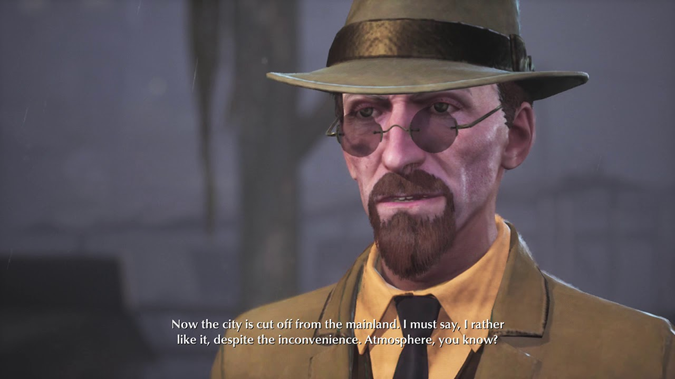
Indeed
While it’s clear THE SINKING CITY suffers in a number of areas that might curb its enjoyability as a game, there’s an undeniable effort made in making the experience feel authentically “Lovecraft.” It does its damndest to immerse itself and the player in the feel of this century-old well of macabre ideas, saturated to such an excessive degree that it’s frankly kind of endearing, especially as a longtime lover of the source material. And sometimes, that’s all a game needs to be “good,” even if the common wisdom dictates otherwise.
Make no mistake, THE SINKING CITY has its hang-ups, and it’s definitely not something I can recommend in good faith to anyone with an eye for solid game design. All I know is that if I were given the choice between this and, say, CALL OF CTHULHU, I’m choosing SINKING CITY without a second thought. At least then I know I’m getting a game that wears its heart on its sleeve rather than a game pretending it has one at all.


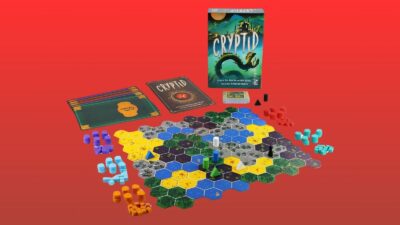
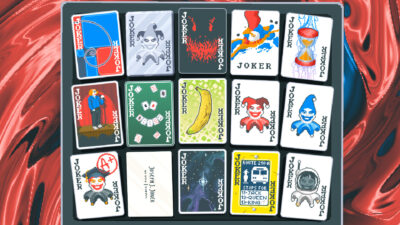
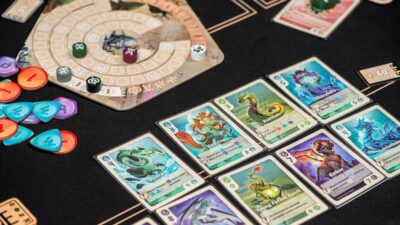

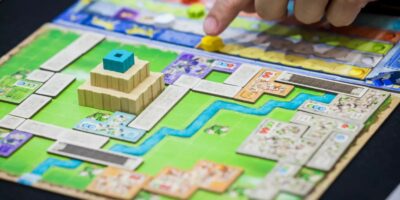





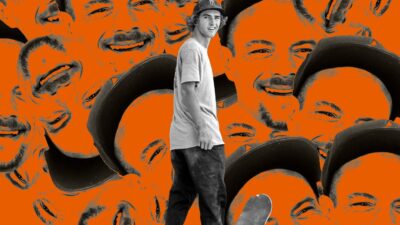



Comments